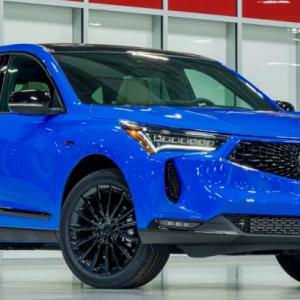Acura RDX A-Spec Advance
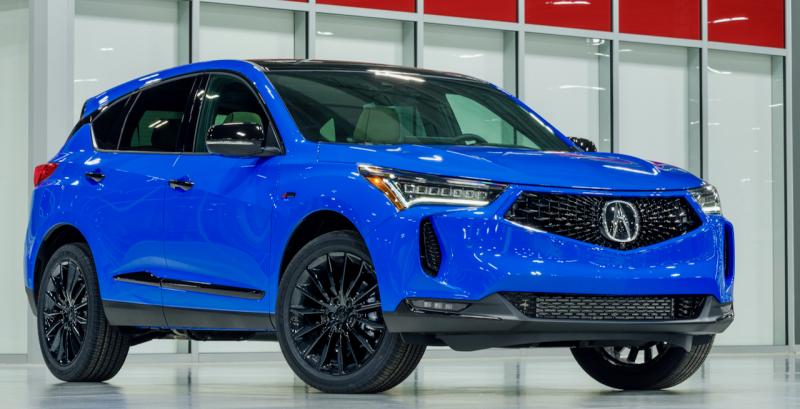 The RDX A-Spec Advance is almost more German than the Germans—purposeful, focused and equipped for comfort and concentration behind the wheel. This color is Apex Blue Pearl.
The RDX A-Spec Advance is almost more German than the Germans—purposeful, focused and equipped for comfort and concentration behind the wheel. This color is Apex Blue Pearl.
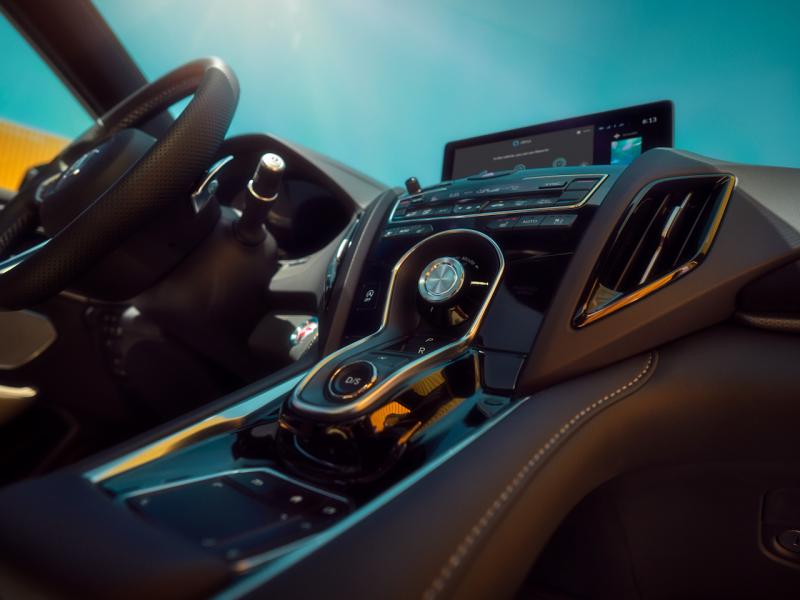 Honda’s unique gear shifter sits higher in the RDX, which somehow makes it easier to use. The upper knob is the drive-mode selector; the flat panel at the bottom is the computer touchpad, which is in fact a bit touchy.
Honda’s unique gear shifter sits higher in the RDX, which somehow makes it easier to use. The upper knob is the drive-mode selector; the flat panel at the bottom is the computer touchpad, which is in fact a bit touchy.
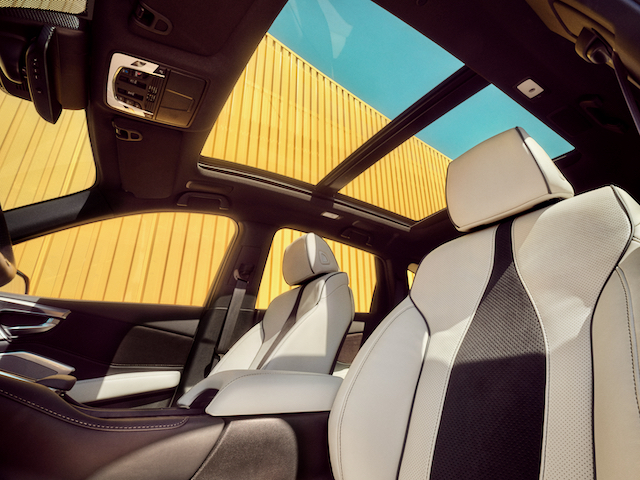 A-Spec trim includes upgraded seat materials, dark-gray alloy wheels, a flat-bottom, leather-wrapped steering wheel, blacked-out bumpers and spoilers, LED fog lamps and special badges. Acura calls this high-tech, high-style interior treatment “Orchid.”
A-Spec trim includes upgraded seat materials, dark-gray alloy wheels, a flat-bottom, leather-wrapped steering wheel, blacked-out bumpers and spoilers, LED fog lamps and special badges. Acura calls this high-tech, high-style interior treatment “Orchid.”
 The RDX A-Spec Advance is almost more German than the Germans—purposeful, focused and equipped for comfort and concentration behind the wheel. This color is Apex Blue Pearl.
The RDX A-Spec Advance is almost more German than the Germans—purposeful, focused and equipped for comfort and concentration behind the wheel. This color is Apex Blue Pearl.
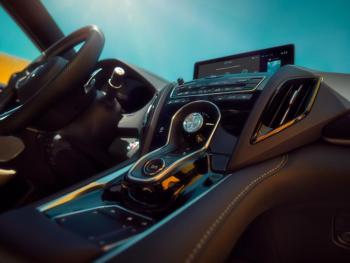 Honda’s unique gear shifter sits higher in the RDX, which somehow makes it easier to use. The upper knob is the drive-mode selector; the flat panel at the bottom is the computer touchpad, which is in fact a bit touchy.
Honda’s unique gear shifter sits higher in the RDX, which somehow makes it easier to use. The upper knob is the drive-mode selector; the flat panel at the bottom is the computer touchpad, which is in fact a bit touchy.
 A-Spec trim includes upgraded seat materials, dark-gray alloy wheels, a flat-bottom, leather-wrapped steering wheel, blacked-out bumpers and spoilers, LED fog lamps and special badges. Acura calls this high-tech, high-style interior treatment “Orchid.”
A-Spec trim includes upgraded seat materials, dark-gray alloy wheels, a flat-bottom, leather-wrapped steering wheel, blacked-out bumpers and spoilers, LED fog lamps and special badges. Acura calls this high-tech, high-style interior treatment “Orchid.”
Acura is, of course, Honda’s posh brand, and the RDX is Acura’s two-row sport-utility vehicle—smaller and more dynamic than Acura’s MDX, better-equipped and more luxurious, powerful and expensive than Honda’s similar-size CR-V.
Like the TrailSport version of the Honda Passport reviewed last week, A-Spec is a cosmetic trim package. All RDX models share the same engine (a 272-horsepower turbo Four), transmission (a 10-speed automatic with manual shift paddles) and multi-link suspension; “upgrading” merely by adding bits of flash smacks of Detroit at its 1970s worst. But I suppose every now and then Engineering has to let Marketing have its way, and the A-Spec trim does make an involved driver feel a wee bit more special.
The Advance package, however, does have some meat to it: adaptive shock absorbers, a bright and crisp head-up display in the (heated) windshield, a 360-degree camera, rain-sensing wipers, 16-way power front seats, a hands-free tailgate, heated steering wheel and rear seats, and a better stereo.
These worthy features atop an already excellent vehicle leave the RDX in no serious need of further enhancements. Our deep-blue tester may not be as country club-worthy as its pricier European peers, but it exudes a distinct sense of completeness. It is just the right size for empty-nesters, with just the right level of comfort and features, and underfoot it feels at least as competent as any autobahn-burner that costs 10 or 15 grand more.
When this third-generation RDX appeared, as a 2019 model, Honda told us that, thanks to new steel alloys and high-strength adhesives, its body shell was more rigid and tightly sealed than Gen Two’s, yet slightly lighter. Honda expected, and saw, improvements in collision-test safety ratings and cabin noise. Drivers expected, and got, improvements in handling and comfort.
A stiff and stable platform helps the RDX make the most of its adaptive Advance suspension and its all-wheel drive and torque-vectoring system, which helps to arc the vehicle around tight corners. It’s noticeable, especially under power.
Also part and parcel of this road-focused attitude is the RDX’s new cockpit, which wraps neatly around the driver and helps her focus. High-quality, positive switchgear and crisp graphics add to the sense of purpose. Even the oddball shifter, which requires either pushing or pulling on buttons, seems easier to use when it sits a few inches higher than in other Honda vehicles.
A-Spec and Advance trims aside, the 2022 RDX has been incrementally refreshed throughout. The four driving modes have become more distinct—Honda says Comfort is more comfortable, Sport is more responsive—and, in addition to all its other missions, the driver’s active safety system now reads traffic signs, reacts to obstacles better, shows blind spots with the lane-change assist and reminds us to check the rear seats when leaving the vehicle.
The base RDX starts at just under $40,000 with front-wheel drive; AWD is a $2,000 option. From there, prices and options zig-zag upward through Technology, Advance, A-Spec + Technology and A-Spec + Advance. With the destination & handling charge, our sample A-Spec Advance lists for $52,845. At that price, it feels like good value.
Silvio Calabi has been reviewing cars since Ronald Reagan removed the solar panels from the White House. He lives in Camden.

